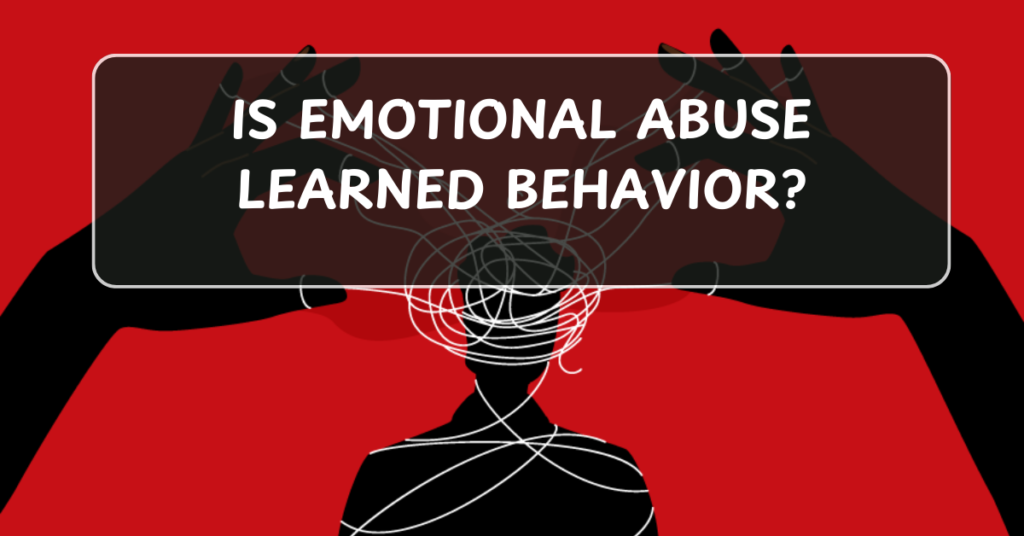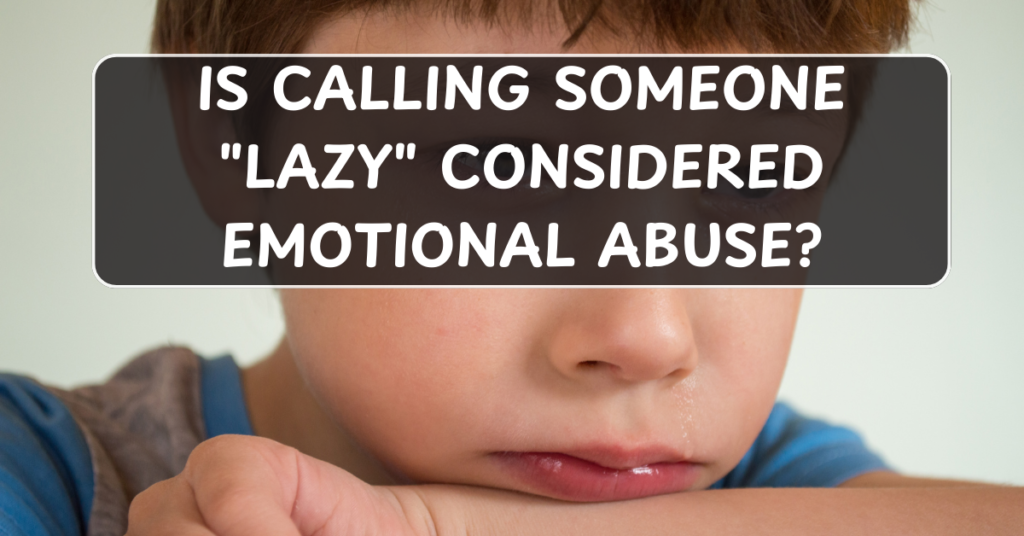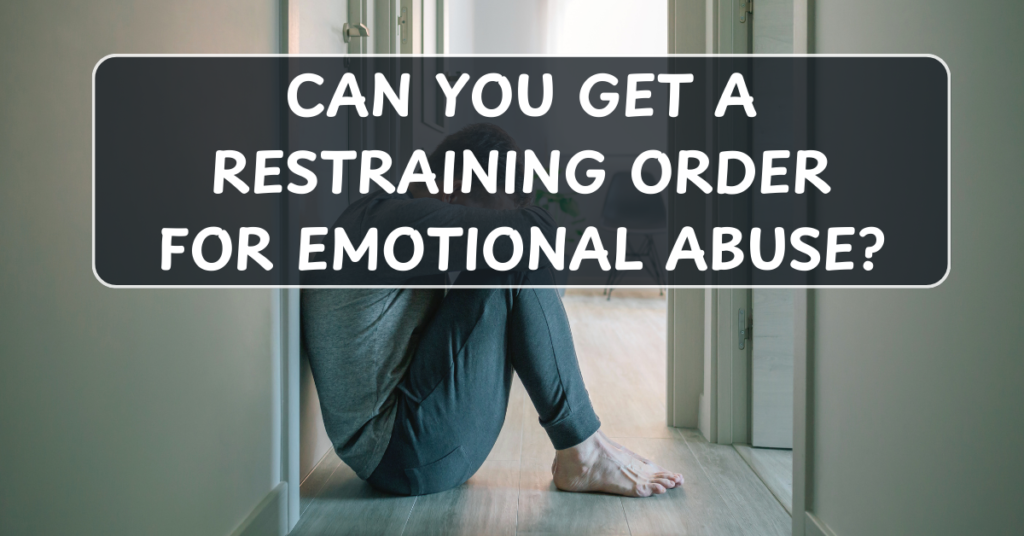
Emotional abuse is a serious form of manipulation and control that can have lasting effects on a person’s mental health and well-being. One common question that arises in discussions about emotional abuse is whether it is learned behavior. In this article, we’ll explore the concept of emotional abuse, how it can be learned, and what factors contribute to its development.
What Is Emotional Abuse?
Emotional abuse involves behaviors that undermine a person’s self-esteem, manipulate their feelings, and cause psychological harm. Unlike physical abuse, emotional abuse doesn’t involve visible injuries, but its effects can be just as devastating. Some common examples of emotional abuse include:
- Verbal attacks: Insults, name-calling, and constant criticism.
- Isolation: Limiting contact with friends, family, or other support systems.
- Gaslighting: Making the victim doubt their own perception of reality.
- Blame-shifting: Holding the victim responsible for things that are not their fault.
- Controlling behavior: Monitoring or dictating what the victim can do, wear, or say.
Emotional abuse can occur in any type of relationship, including romantic, familial, or even in professional environments.
Is Emotional Abuse Learned Behavior?
The short answer is yes, emotional abuse can be a learned behavior. Like many forms of abuse, emotional abuse can be perpetuated across generations or within specific environments. Here’s how it can be learned:
1. Childhood Environment and Family Dynamics
Emotional abuse can often be learned in childhood, particularly if an individual is raised in an environment where abusive behavior is normalized. For example, children who grow up witnessing or experiencing emotional abuse in their homes may learn these behaviors as a way to cope with difficult emotions or to gain power and control. The cycle of emotional abuse can continue into adulthood if individuals don’t have the tools to recognize and break these patterns.
- Modeling behavior: Children often imitate what they see at home. If a child observes one parent emotionally abusing the other, they may come to believe that such behavior is acceptable.
- Inconsistent parenting: Parents who are emotionally unpredictable or use manipulation to control their children may unintentionally teach emotional abuse as a coping mechanism.
2. Learned Coping Mechanisms
People who have experienced emotional abuse may internalize unhealthy coping strategies, including the use of manipulation and control. These individuals may carry these behaviors into future relationships, not necessarily out of malice but because they have learned them as a way of handling conflict or gaining control.
- Low self-esteem: People who were emotionally abused in their past may have low self-worth, and they might attempt to assert power over others to feel more in control of their own emotions.
- Defensiveness and fear: Some individuals may use emotional abuse as a defense mechanism when they feel threatened or vulnerable.
3. Social and Cultural Influences
Emotional abuse can also be learned from broader societal and cultural contexts. Certain environments may normalize emotionally abusive behaviors, making them harder to recognize and address. In some cultures, emotional manipulation or control may be seen as acceptable forms of conflict resolution or power dynamics within relationships.
- Gender roles: In some cultures, traditional gender roles may encourage emotional manipulation, where one partner (often the male) may assert control over the other (often the female) through emotional abuse.
- Power imbalances: Workplaces, schools, or communities with rigid hierarchical structures can sometimes foster emotional abuse, especially in environments where intimidation and control are used as tools for maintaining authority.
Breaking the Cycle of Emotional Abuse
Recognizing emotional abuse as learned behavior is an important step toward breaking the cycle. Understanding the roots of emotional abuse can help individuals who have been affected by it take the necessary steps toward healing. Here are some ways to break the cycle:
- Therapy and counseling: Therapy can help individuals identify patterns of emotional abuse and work through the trauma caused by these behaviors. Cognitive-behavioral therapy (CBT) and trauma-focused therapy are particularly helpful for addressing the impacts of emotional abuse.
- Setting boundaries: Learning to set healthy boundaries is crucial for anyone who has experienced emotional abuse. This empowers the individual to assert their needs and protect their emotional well-being.
- Support systems: Surrounding oneself with supportive friends, family, and professionals can help reinforce positive behavior and provide emotional support during the healing process.
- Education and awareness: Understanding the signs of emotional abuse and recognizing its patterns is key in preventing future abuse. Education on healthy relationships and communication strategies can help individuals avoid perpetuating these behaviors.
Conclusion: The Importance of Understanding Emotional Abuse
Emotional abuse is often learned, either through childhood experiences or societal influences, and it can be difficult to recognize or break free from. However, by understanding that emotional abuse is learned behavior, individuals can take steps toward healing and breaking the cycle of abuse. Therapy, support, and education are essential for those affected, and addressing emotional abuse as a learned behavior helps create a path toward healthier, more respectful relationships.
If you or someone you know is experiencing emotional abuse, it’s important to seek help and support from trusted professionals, organizations, or loved ones who can assist in the recovery process.


